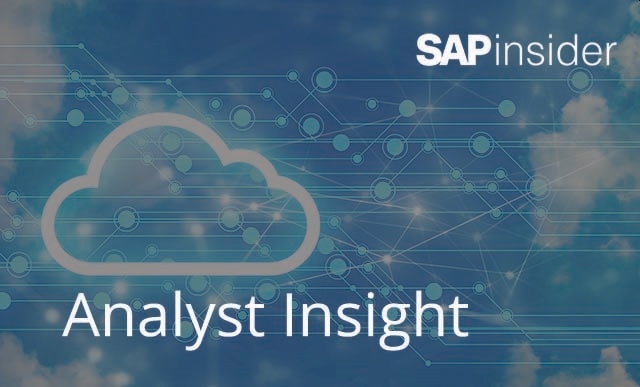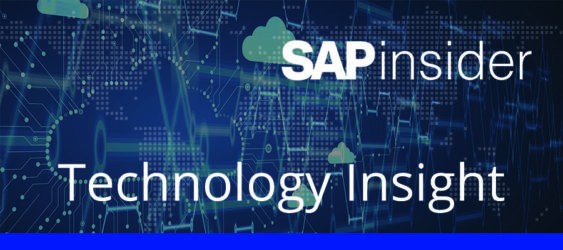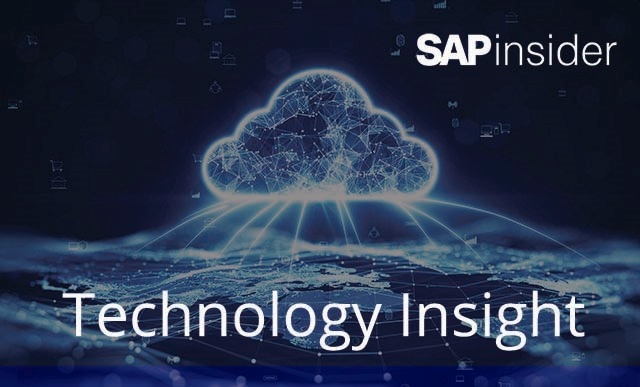How Endress+Hauser Is Creating a Simpler Business by Making Integration a Strategic Imperative
by Lauren Bonneau, Managing Editor, SAPinsider
With more than 14,300 employees worldwide, Endress+Hauser — a global supplier of products, services, and solutions for industrial process engineering, measurement, and automation — is a growing group of companies that currently number 134 across 48 countries. To handle its massive IT needs, in 1997, the group created an internal IT partner organization, Endress+Hauser InfoServe, which is responsible for safely and reliably managing its enterprise data and handling the group’s 1,050 application interfaces with €43 million digital net sales.
Endress+Hauser has been a trailblazer when it comes to making integration a strategic imperative. In 2018, Endress+Hauser InfoServe conferred and decided to create an integration competency center (ICC) named Applications Integration – in which all the group’s integration resources and skills are centralized. The ICC is responsible for the governance and continuous improvement of all integration matters and is focusing on process integration as well as data integration topics such as extract, transform, and load (ETL) mechanisms, data movement, and data synchronization.
“It’s important to have an integration competency center so multiple projects within the group are not always reinventing the wheel regarding integration demands,” says Markus Schalk, Head of Applications Integration at Endress+Hauser InfoServe. “That‘s exactly what we want to prevent, and having set expertise dedicated to integration makes it possible to know our costs and provide efficient, standardized IT platforms.”
“It’s important to have an integration competency center so multiple projects within the group are not always reinventing the wheel regarding integration demands.”
— Markus Schalk, Head of Applications Integration at Endress+Hauser InfoServe
According to Mr. Schalk, Endress+Hauser’s recent efforts to establish this ICC was part of a larger strategic initiative, called “Simple Business IT,” which is focused on how to seamlessly connect all systems across the Endress+Hauser group of companies — for example, integrating internal applications such as ERP systems with business-to-business (B2B) applications so customers can digitally order products via interfaces. “Simple relates to the organization’s end-to-end processes, business applications, and system architecture, and integration is the backbone to provide a seamless, connected, simple IT landscape,” he says. “This strategic initiative is about applying digitalization to make things simpler not just for our internal user group within the company, but also for our customers.”
Customers and internal users expect a seamless experience where navigating between applications is invisible to them. “It shouldn’t be feasible for an end user to know there are different systems involved or have to copy and paste information from one application to another,” Schalk says.
To achieve this, Endress+Hauser created a Business Data and Integration Hub (BDIH), capitalizing on the capabilities of SAP Cloud Platform Integration Suite and SAP HANA, and using SAP Integration Solution Advisory Methodology. Schalk’s team relied heavily on this methodology from a very early stage to analyze integration demands, guide and inform different stakeholders across the group, and lead project decisions and tool selections.
The Benefits of Moving Integration to the Cloud
Endress+Hauser has been running ERP software from SAP for 20 years. Recently, the business began a project to consolidate all of the group’s ERP systems onto one SAP S/4HANA instance. In addition to its longtime use of SAP’s ERP software, Endress+Hauser has a long history with integration tools from SAP, including using the very first version of SAP NetWeaver Exchange Infrastructure and then later SAP Process Integration. According to Schalk, the organization decided to stick with SAP integration software for its move to the cloud based on the success of its past experiences as well as its trusted partnership with SAP.
While Endress+Hauser follows a best-fit architecture — meaning if a new HR system is needed, both on-premise and cloud solutions are reviewed and the best fit is selected — it decided that the best fit for integration would be the cloud, so on-premise solutions were not considered. As far as middleware is concerned, Endress+Hauser did not want to have an on-premise system as well as a cloud system, according to Schalk. “More reasonable would be for us to have one solution, and we wanted to go cloud-first, moving all integration topics to the cloud,” he says. “Within three to five years, we want to have all integrations running in SAP Cloud Platform Integration Suite.”
By moving integration to the cloud, Endress+Hauser can ensure that systems data is always up to date and secure with zero downtime, and it can create an agile, data-driven platform with stable operations, according to Schalk. He describes the top benefits and most measurable key performance indicators as being speed, cost-efficiency, and no-touch transactions.
Speed
With many companies currently adopting agile methods, speed is an important topic, according to Schalk. “Having good data integration in place, and good quality data in one place, speeds up other projects — not just in terms of cost, but also in providing solutions to internal users and customers,” he says. “For example, we developed an intelligent product configuration called “Quick Select” where customers can select a product on our website, such as a measurement device, and choose a few main properties, and the rest of the key parameters are then calculated and filled automatically based on customer history — done by intelligent magic behind the scenes — via the data lake, Python scripts, and SAP Cloud Platform.”
The development process for the Quick Select configuration was dramatically shorter than the traditional method where developers need to determine what data they need, where to get the data, and how to integrate that data. “With all the data in one place, we can just grab the application programming interface (API) and take the data. It’s all readily available,” Schalk says. “We were able to develop Quick Select in three months, which would have traditionally taken one year. This is an increase in speed of more than 400%.”
Cost-Efficiency
“One of the biggest benefits of SAP Cloud Platform Integration Suite is the prepackaged integration content, which can be implemented very fast,” Schalk says. “We recently implemented SAP SuccessFactors solutions as our new HR platform, and the prepackaged integration content made it very easy for us to integrate the new solutions with SAP ERP.”
The prepackaged content not only enabled a fast and easy implementation but also lowered costs, according to Schalk. “We always have an up-to-date system with new features without any patching, big upgrade projects, or operational pain,” he says. “And due to the pre-packaged integrations and lower maintenance efforts, we have cost savings of at least 25% on average.”
No-Touch Transactions for Customers
According to Schalk, B2B integration is an important piece of the “Simple Business IT” strategy, and the topic of no-touch transactions has grown within the organization to become a strong area of focus, investment, and integration development over the last few years. “Digitalization for us means having direct integrations where customers can order our products without human interaction — so there are no salespeople on the phone answering questions,” he says. “Customers simply press a button in their system, and a no-touch transaction directly lands on the workplace of our production centers.”
Schalk says that Endress+Hauser already has 130 strategic customers integrated, with roughly €43 million per year running through B2B integrations, as no-touch transactions. These transactions flow through the ERP system directly to the manufacturing execution system to produce measurement devices without customers requiring any human interaction in between.
Future Integration Plans
Endress+Hauser plans to continue building on its BDIH and using SAP Cloud Platform Integration Suite with a focus on API management and an API-first approach. “At the moment, we are investing heavily in bringing asset data to the cloud in a standardized manner with generic APIs,” says Schalk. “But we are planning to bring even more data into the cloud with SAP HANA — not only asset data, but more business data, such as transactional data or analytical data.”
According to Schalk, integration matters to Endress+Hauser, and he advises that other organizations should also consider it a key issue rather than a side topic. “An integrated IT landscape creates many benefits and generates value aside from cost reduction,” he says. “Having control over data and bringing it together in one single point of truth makes it easier for companies to quickly create new intelligence solutions.”









